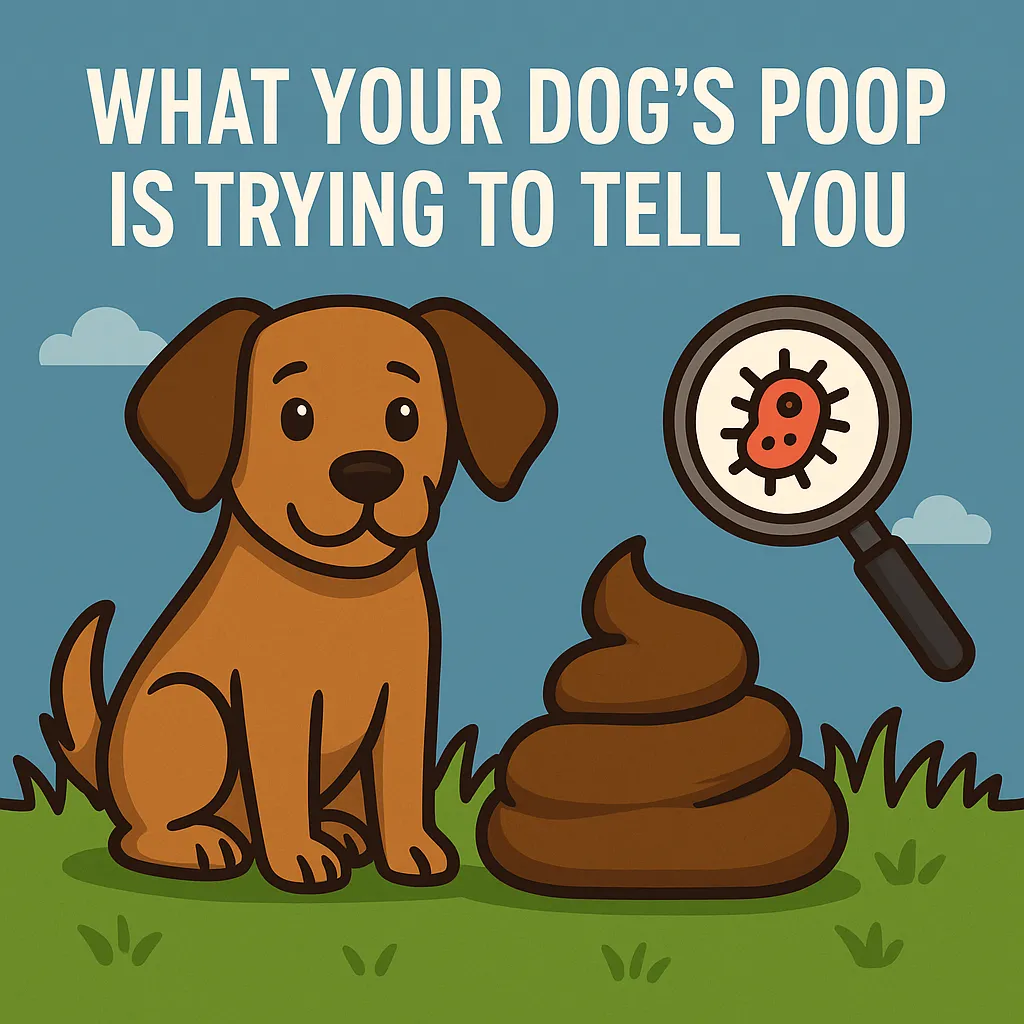
What Your Dog’s Poop Is Trying to Tell You (And Why Checking It Matters)
“Not only are bloggers suckers for the remarkable, so are the people who read blogs.” - Seth Godin
Introduction:
Dogs don’t speak, but their poop sure does. Every time your pup goes, you’ve got a live health check—no stethoscope required. Monitoring poop can help you spot foreign objects, dangerous bacteria, parasites, and internal issues early on. Let’s dig into what colors and textures mean, why dog waste can be surprisingly hazardous, and when to treat poop like a red flag.

With that said, here are 5 things your dogs' poop is trying to tell you! 💩
1. Why Checking Dog Waste Is Actually Smart
Hidden hazards: Dog poop may hold millions of disease-causing bacteria, including antibiotic-resistant strains like MRSA and Enterococci (Source 1).
Massive contamination risk: Just one gram can carry up to 23 million fecal coliform bacteria (Source 2).
Parasite exposure: Dog feces often contain roundworms, hookworms, tapeworms, Giardia, and more (Source 3).
2. What Poop Color Means: Health Code Decoder
3. What to Watch for Beyond Color
Mucus or slimy coating: Thick or jelly-like mucus could signal inflammation, colitis, parasite infection, or dietary upset (Source 4).
Worms or white specks:
Rice-sized moving segments = tapeworms
Spaghetti-like strands = roundworms
Invisible worms like hookworms/whipworms still cause symptoms like anemia or diarrhea (Source 9)
Foreign objects: Dogs swallow everything—from rocks and wrappers to bones and toys. Some pass; others lodge in the GI tract, causing blockages (Source 10).
4. Why Prompt Cleanup Saves Lives (Even Yours)
Spreads disease: Dog waste is a breeding ground for pathogens like Giardia, E. coli, Salmonella, Cryptosporidium, and Toxocara eggs (Source 11).
Environmental strain: Unchecked waste can close beaches or contaminate waterways (Sources 2, 12).
5. When To Call the Vet 🚨
Black or red stool
Persistent green, yellow/orange, or pale stool
Visible worms or unusual specks
Heavy mucus or slimy consistency
Frequent diarrhea, vomiting, weight loss, or fatigue
Pro tip: Save a sample in a sealed bag if possible. Your vet can run a fecal flotation or bacterial cultures to pinpoint the issue.
✅ What You Can Do as an Owner
Check the poop each time Fido goes.
Pick it up promptly to prevent spread.
Take notes on changes and bring them to vet visits.
Keep up with deworming and vet checks.
Educate others—share this guide with anyone who cares for your dog.
🧠 Final Thoughts
Your dog’s poop is like a health report they leave in the yard — telling you what they’ve been eating, how their digestion’s working, and even warning you about possible illness. But life gets busy, and most owners don’t have time (or let’s be honest, the desire) to check every single time.
That’s where TC Dog Waste Removal’s Pet Health Cards come in.
Every time we visit, we keep an eye out for anything unusual — from odd colors and textures to foreign objects or parasites — and we note it for you. If something looks off, you get a clear, simple card so you can decide whether it’s worth a vet visit.
It’s one less thing for you to worry about, and one more way we help keep tails wagging and families worry-free.
📚 Sources
https://www.doodycalls.com/articles/blog/lawn-care-for-dog-owners/toxic-waste
https://avmcww.com/2020/02/26/parasites-and-poop-the-importance-of-picking-up-after-your-dog
https://mitchellvetclinic.com/2024/01/18/lets-talk-about-poop
https://farmdognaturals.com/2022/01/black-brown-red-orange-blue-a-guide-to-dog-poop
https://www.chewy.com/education/dog/health-and-wellness/dog-poop-color-chart
https://vcahospitals.com/know-your-pet/ingestion-of-foreign-bodies-in-dogs
https://www.dogtopia.com/edmond/back-yard-bacteria-courtesy-fido
